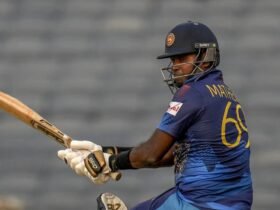The wicket keeper holds a super important role in cricket, and they’re up to a bunch of tasks during a match. Let’s break down what a wicket keeper actually does:
The Job of a Wicket Keeper:
So, the wicket keeper stands behind the stumps at the batter’s end. Their primary duty is to halt the ball after it zooms past the stumps. This helps keep the other team from racking up extra runs.
If the batter doesn’t hit the ball, the wicket keeper stops “byes” from being counted as points. But when the batter does make contact, the wicket keeper prevents “leg byes” and runs. What’s more, the wicket keeper can even nab the ball to dismiss a batter.
Important Responsibilities of the Wicket Keeper:
In the heat of a cricket game, the wicket keeper gets into lots of actions. They’re there to catch the ball when it’s hurled from the field, usually near the stumps. Plus, they lend a hand in getting batters out by removing the bails if a batter strays too far from the crease.
You know what’s cool? The wicket keeper is the only player who can do “stumpings.” This means if the batter isn’t in the right spot and the keeper pulls off the bails, the batter is out. And when the batter hits the ball, the keeper is on the lookout to catch it and prevent extra runs.
But wait, there’s more to the wicket keeper’s game in modern cricket. They can be helpful to their team captain in deciding whether they should challenge a decision made by the umpire. They also help figure out where to position fielders by predicting where the ball might go based on the batter’s moves.
Rules for the Wicket Keeper:
Every game has rules, and cricket is no different. The wicket keeper has to follow these rules carefully. They need to wear the right equipment and wear it properly. There are also rules about where they can stand behind the stumps. If they don’t follow these rules, they could get into trouble and face some penalties.
Also Read: Understanding the Number of Overs in Test Cricket
Frequently Asked Questions (FAQs) about Wicket Keepers:
- How many wicket keepers are there in a cricket team? Only one wicket keeper is allowed in a team. So, they’re kind of like the special guardian of the wickets.
- Who stands closest to the wicket keeper? Imagine the wicket keeper is like a goalkeeper, and the first slip fielder is their best friend standing right next to them. The first slip fielder is there to help out, especially when the batter is swinging their bat.
Conclusion
Upon reviewing this comprehensive exposition, the true extent of a wicket keeper’s responsibilities becomes apparent. Beyond the common expectations of receiving the ball when it passes the bat or making catches from edged shots, the wicket keeper plays a significant role in stumpings and run-outs. Moreover, they contribute substantially to DRS decisions, a facet often overlooked.
The multifaceted duties of the wicket keeper underline their undeniable importance within the team, a sentiment ardently echoed by countless cricket enthusiasts.




























Leave a Reply